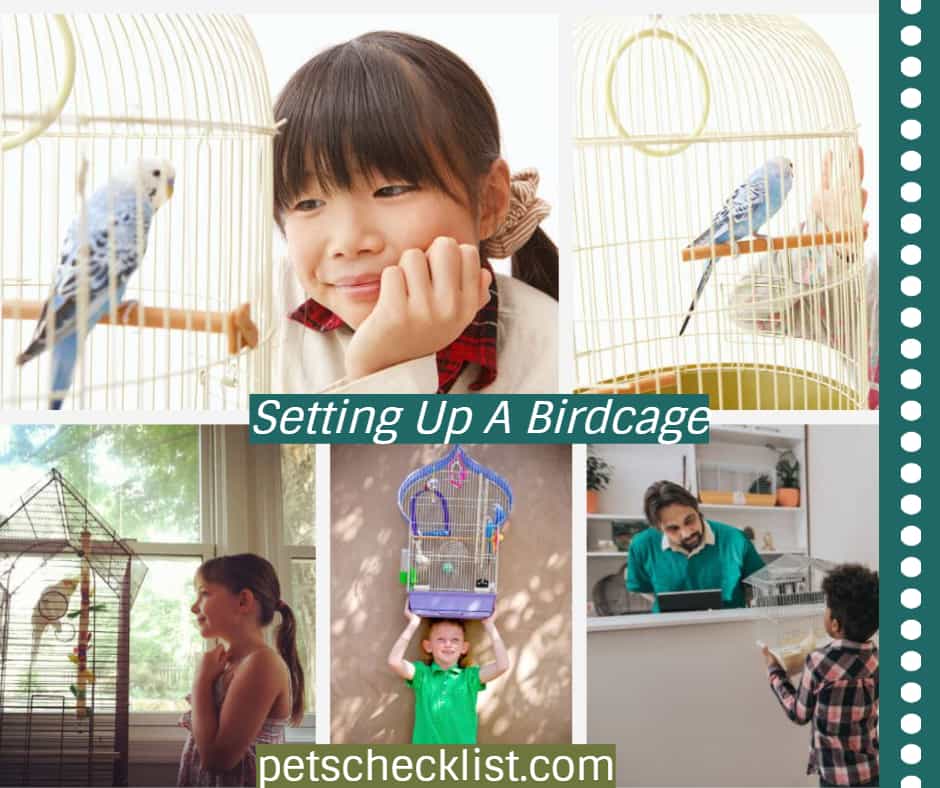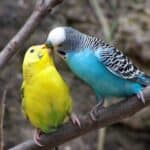The pet birds are widely known as a fun-social companions to keep. And yet all have the same basic requirements. As feathered animals, they are not particularly demanding, and enjoy even minor attentiveness. Nevertheless nothing but the best should be good enough for your pets. So, setting up the best birdcage for them would be great!
As a pet bird owner, you are responsible for making sure that your pet bird has its place to rest, eat and enjoy. In this article, we want to give you some important tips on how setting up a birdcage should be done. Let’s begin!
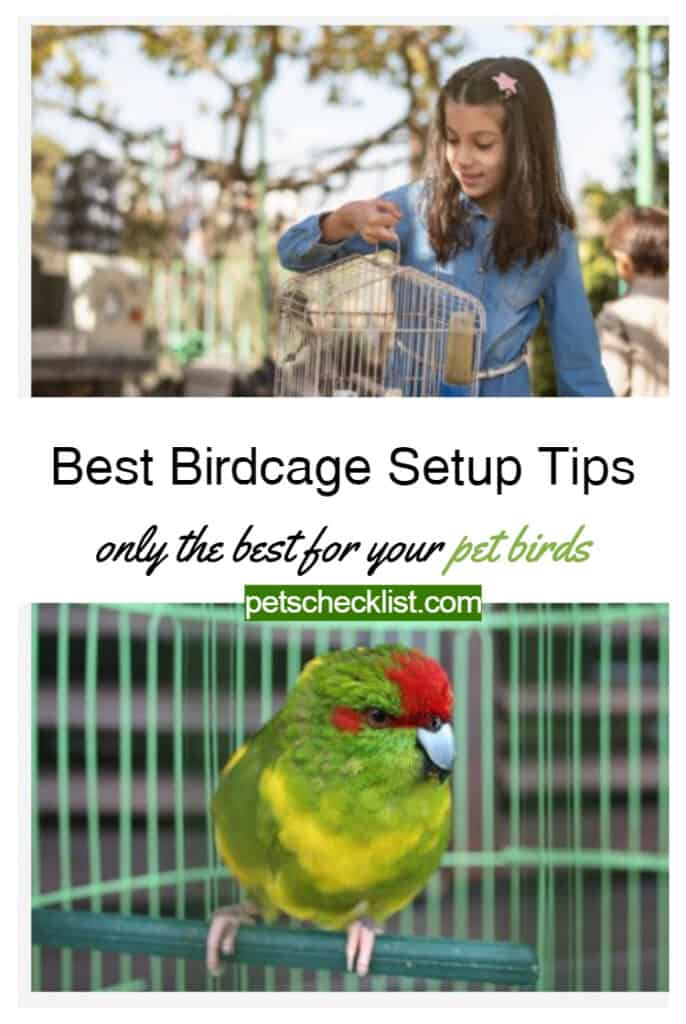
Table of Contents
How should a birdcage be set up?
In setting up the bird’s cage, you should be aware that it can be quite costly. But that’s not a big deal as long as you want to make sure that your pet bird is safe and secured. For small birds like the parakeets, the average bird cage cost is around $70.
It is not required to buy an expensive cage for your feathered companion. However, it is much better to buy a birdcage to make it more appealing and convenient to the pet bird. So here are the simple tips in building up a simple but guaranteed safe birdcage.
1. Pick the right birdcage
In choosing a cage, you should consider the bird’s space. Therefore, it should be spacious for the bird to roam around and fly. The too-small birdcage is not comfortable for birds. Since birds are known playful, a small cage will not help them to enjoy. It might cause harm to the bird that can result in an injury. So, get the most spacious cage for the bird as possible.
2. Prepare your materials (if you prefer to set up your bird’s cage on your own)
Prepare your materials. A typical birdcage comes with metal, stainless steel, or wires. Choose stainless steels that will last for a long time. Avoid cheap materials to prevent rust that can be harmful to birds.
3. Put bedding at the bottom of the cage
To minimize dirt, place a newspaper or paper towel at the bottom of the birdcage to catch their waste and make it easier to clean. Place grates a few inches above the bottom of the cage to avoid exposure to dirt.
4. Place the food and water bowls on the side of the cage.
You can also buy dishes from the pet store. You will need to hang those from the side of the cage and let your bird get it. It is easy to refill and convenient than placing a bowl with food.
5. Make a perch for your bird
Place a perch for your bird. Your pet bird will enjoy it through different heights, contours, and textures. It will bring amusement for the pet bird. Even with only a modest degree of handiness, you can construct extra perch sites yourself. What is important is that safety is always of primary concern. Cheap toys and secondhand cages are definitely taboo for your birds.
Be certain to provide a variety of perch styles and textures for the bird. Make sure that there are perches of variable thickness available in the cage and at the various extra landing sites around the racer if you allow free flight.
6. Put toys inside the cage.
Select a cage suitable for the bird. For instance, sometimes they refuse to go into their cage because there are no toys and the birds are bored and lonely in their cage. Toys are essential for the mental development of the birds. A good toy for the birds can be mirrors, ladders, and bells. You can also put wooden toys in the cage as birds can enjoy chewing on them. Always remember to wash the toys, rinse them well and let them dry before you put them inside the birdcage.
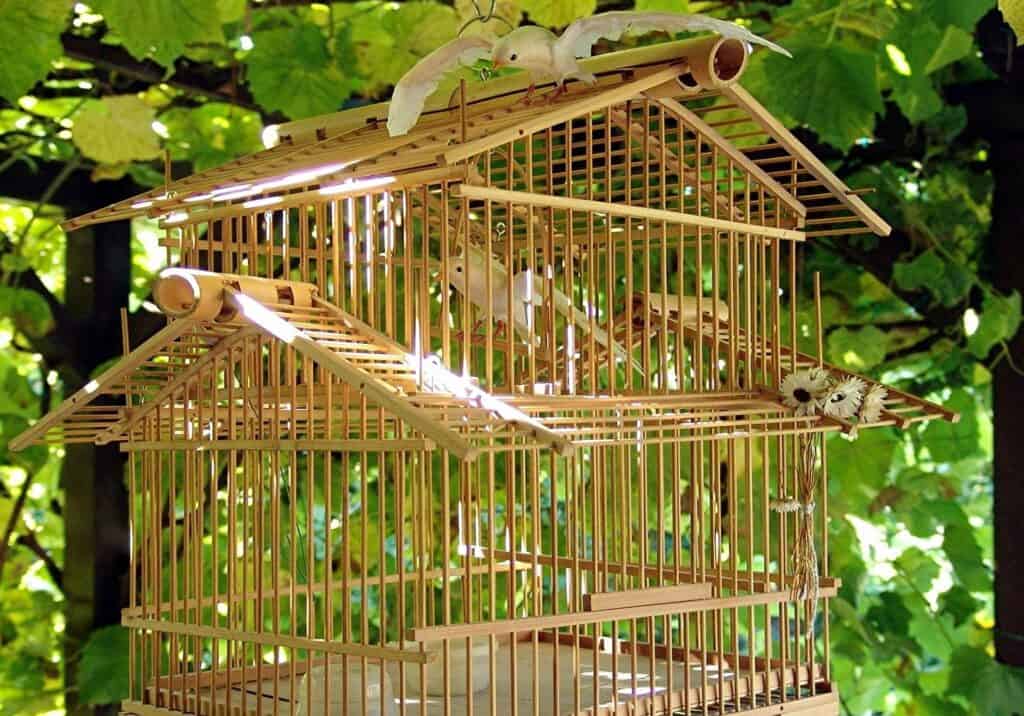
What do you put on the bottom of a birdcage?
A pet owner should put a bedding. It makes it easier to remove droppings from the bird. Some of the usual bedding that pet owner’s putt is paper or paper towels with a grate separating the bird from the bottom. Layers can be removed once or multiple times a day to keep a cage clean and free of droppings and fungal spores.
It is not advisable to put gravel or gravel paper on the bottom of your cage. This cage maintenance method encourages the bird to pick up those that can be contaminated by its droppings. It can cause skin ailments to the pet bird as it contains toxins.
To avoid excess dirt inside the cage, change the lining every other day. New bedding can minimize possible bacteria that can affect your bird’s health condition. Avoid using cat litter, wood shavings, or hardly rough textures that can harm your bird.
How close should the cage bars be?
Most pet owners prefer to seek help from the pet store where they purchased their birdcage. They need to know the proper spacing of bars in the cage. All birds need room to play, exercise, explore, and fly, even the smallest ones.
When choosing a bird’s cage, you should consider the size of your pet bird. The bars of the cage should have appropriate space like 1/2 in (2.54cm). So before getting a birdcage, measure first the spacing of the bars. Be careful with the bars. It should not be too far apart as birds can get their head stuck or escape the cage.
For small birds such as finches, canaries, and lovebirds, a spaced no more than 0.63 inches (1.6 cm) apart is enough. For cockatiels, Lories, and Senegals, the bars should be 0.5 inches (1.3 cm) to 0.88 inches (2.2 cm) apart. Larger birds like African Greys, macaws, and cockatoos should have bars that are 0.75 inches (1.9 cm) to 1.38 inches (3.5 cm) apart.
In measuring the proper spacing, it’s better to use a smaller bar spacing than a larger one. A small bar sized cage makes it less likely to escape the birds out of the birdcage.
How do I introduce a new bird to my cage?
Introducing your pet bird to her new place is not as exciting as you think. A bird will need about two weeks to adjust to her new environment. But that depends on your bird. Some bird takes longer to accept their new environment, and some will only need a bit of time to embrace their new home. Before you bring your bird home, you need a finish and safe birdcage for them. Once a bird feels that they are not comfortable, it will probably be hard for them to live with their space.
For faster encouragement, you can place some of her favorite things in the new cage. You can put toys and even foods that will gladly enlighten her mood. The more you give a bird their needs, the more they will be happy and better with the new cage. You can continue putting other things that can draw the curiosity to the bird. Give them some time, and they will be interested in the new things around the cage.
The key to introducing your pet bird to the new cage is patience, consistency, and knowledge. Ensuring that your pet bird is getting settled in a comfortable environment is a demonstration of doing a great start in taking care of your feathered companion. Make sure that your bird is satisfied in its physical environment.
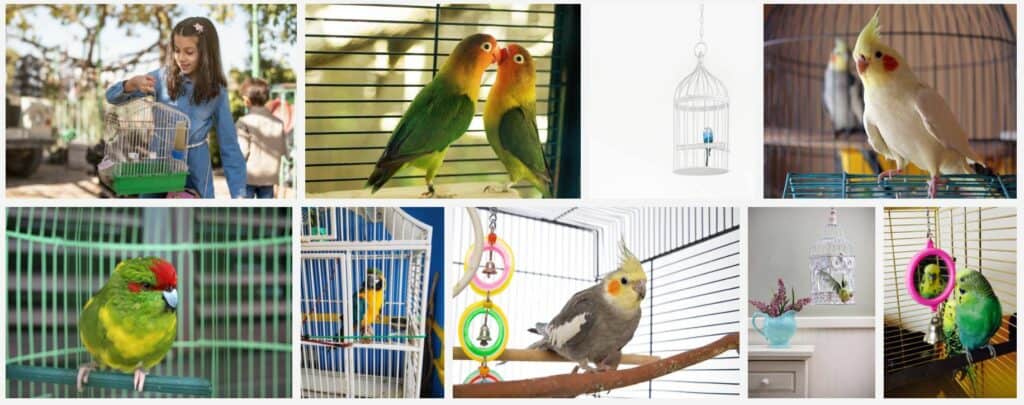
Where should you place a birdcage?
The cage is your bird’s home. A home should make them feel comfortable doing their daily routines like playing, singing around the corner, eating, and sleeping. A cage protects your bird from stuff that might harm them outside their cage.
Choose an area where your bird can see your family gatherings or activities or a place where you like to sit and chill. In that case, your bird will be familiar with you and the things that you always do. Emotional attachments between you and your bird will form great memories that can happen as you are being used to each other.
Here are the four convenient areas for your bird’s cage.
1. Walls
One of the ideal places to put the birdcage is beside the walls. A bird will feel secure when its cage is up against the wall. You can place it in a corner where they can have two barriers. Do not try to put the birdcage directly in front of the window. They can look outside and see dogs that can scare them.
2. An area where they can socialize
Putting your birdcage in the living room can make a crazy level of entertainment for the guest. Given that some birds can talk, their visitors can sit in the living room and spend their time talking to the birds. Avoid placing your birdcage in the kitchen, as it can be too hot for your bird. You can harm your bird while cooking because of the fumes. They can also be able to reach sharp objects that can seriously cause injuries.
3. Light-colored room
Putting your bird’s cage into a dark room will not make your companion bird feel at home. She can be scared and stressed. It can lead to emotional and mental health problems, and worst, she can die from it. So better put your birdcage in a room where there are happy colors like pastel or light colors.
4. Spacious room
You can also put a birdcage in a spacious room where they can feel that they are comfortable. A spacious room can make your pet bird learn from the things they do not usually see. In nature, they are free to fly and never captivated. So it is much better when you bring your pet bird to a house, put them in a spacious room where they can roam around.
Other Video Resources For Birdcage Setups
You may also check some of the good information available online through YouTube. The more ideas you get, the better the outcome of your birdcage setup will be. You may also join our Facebook page at @PetsChecklist. Enjoy!
Choosing the Best Birdcage Location (Video)
Smaller Birds’ Cage Setup (Video)
How to Set Up Your Parrot’s Cage
Making the Cage Look Natural
References:
- https://archive.org/details/budgerigarsevery00niem/mode/2up
- https://web.archive.org/web/20091017200317/http://gould.australianmuseum.net.au/naturalist/indigenous2.htm
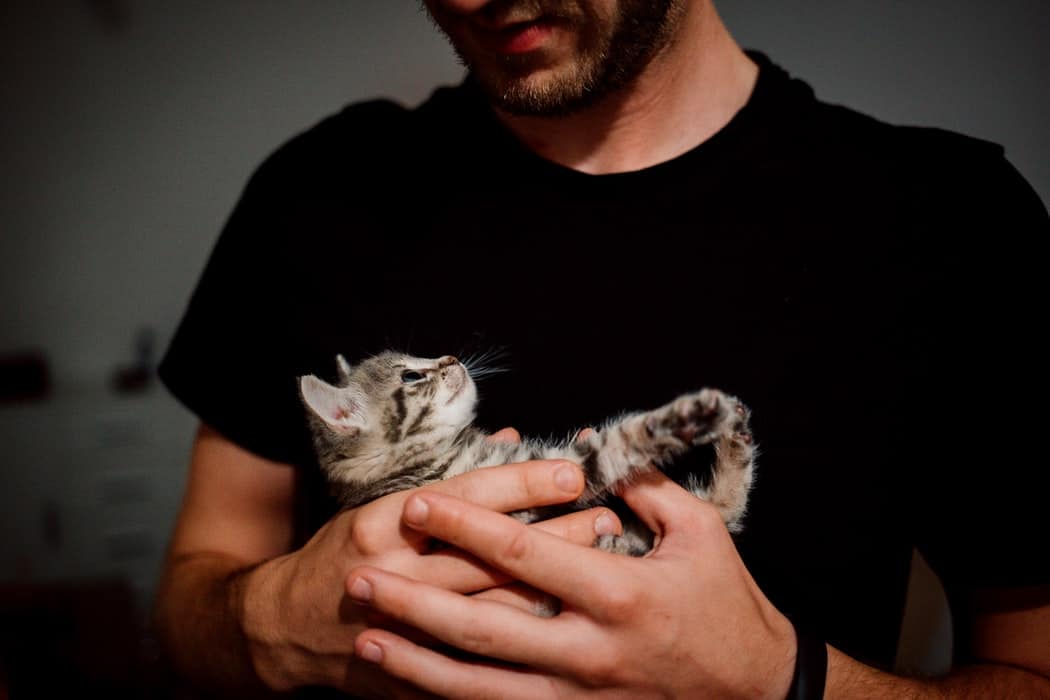
Hezekiah is a pet lover since birth, according to his parents. He started writing for the Pets Checklist in 2020. He is fond of playing with and taking pictures of different friendly animals around his neighborhood. He loves to read and write articles about pets, science, and music.

